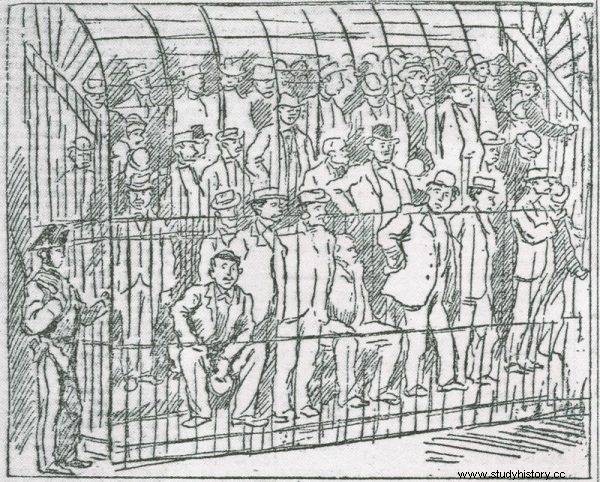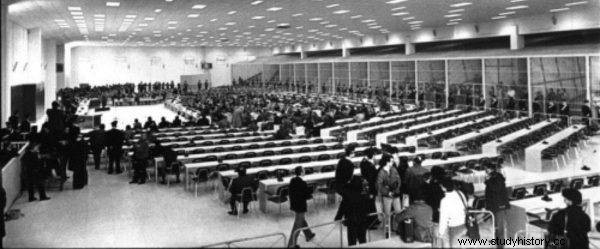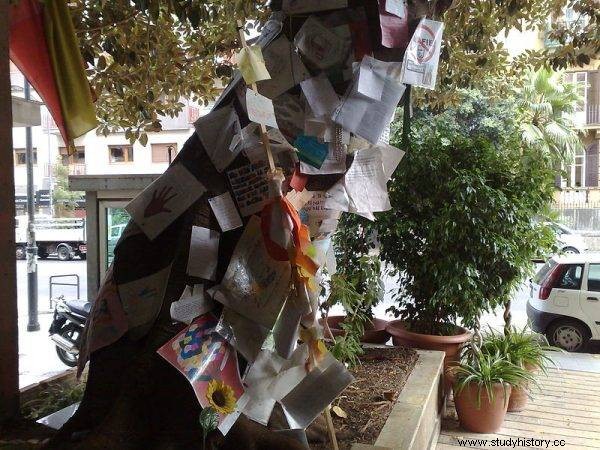It was the largest lawsuit ever against the Sicilian mafia. This 22-month court battle was an enormous logistical undertaking and an unprecedented challenge for the entire Italian judiciary.
Many people thought that the maxi-process would be the beginning of the end of Cosa Nostra. The defeat of the criminal organization that ruled Sicily for over 120 years, however, could not end after a single court battle.
Undoubtedly, however, the maxi-process was a turning point. It was then the whole world first learned what the Sicilian mafia really was what are the rules of its operation and where does its power come from. This is where omerta was officially broken for the first time - the holy pact of silence applicable to all members of the mafia.
There would never have been a maxi-trial if it had not been for the titanic work of a small group of Italian policemen, judges and prosecutors. However, two people turned out to be particularly important. They were Giovanni Falcone and Tommaso Buscetta.
Hero and traitor
Falcone and Buscetta came from two completely different worlds. The former was a representative of the judiciary, while the latter was the first mafioso who decided to cooperate with law enforcement .
Falcone took over as investigating judge at the prosecutor's office in Palermo in 1978 and became head of a cell investigating links between the Sicilian mafia and its American counterpart. The role of Buscetta in the process of breaking up the criminal structures in Sicily was described by Falcone as follows:
Before I met him, our ideas about the mafia were very general. It was he who allowed us to look at her from the inside. He was like a language teacher for us, who enabled us to travel to China without having to resort to gestures and signs during the conversation.

After nearly one and a half years and the preparation of 8 thousand. pages of the indictment, on February 10, 1986, the greatest Italian mafias were finally put on trial.
Why Buscetta decided to break omerta and work with Falcon? Buscetta's family was involuntarily caught up in big mafia scams. The mafia killed his two sons, brother, son-in-law and brother-in-law . Being in the hands of the police, he even made an unsuccessful suicide attempt, believing that when he died, the rest of his loved ones would stay alive. However, when he regained consciousness, the first thing he did was ask to speak to Judge Falcon.
Blood Bath in Palermo
In Sicily the so-called great clan war. The fights of the local mafia families since 1981 have turned Palermo into a real battlefield. Italian journalists then compared the capital of Sicily to Chicago from the prohibition era or Beirut .
The struggle for control of the heroin smuggling channel to the United States (the so-called Palermo conection ) initially only affected members of the mafia. But as judges, carabinieri, politicians and reporters began to lose their lives, the government had to act more decisively.
In 1982, the national hero of the Red Brigades, General Carlo Alberto Dalla Chiesa, became the prefect of Sicily. A tough and uncompromising military man was to be the guarantee of success in the fight against Cosa Nostra, but a few months after his arrival in Palermo, he was murdered.
Soon after, Giovanni Falcone's boss Rocco Chinnici and the leader of the Sicilian Communist Party, Pio La Torre, also died. The latter was the creator of the groundbreaking law that defined the crime of belonging to a criminal group for the first time in the history of the Italian penal code mafia type. The Pio La Torre Act, the testimony of Buscetta and the work done by Falcone and his people finally made it possible to take up a real fight against Cosa Nostra.
464 angry people
A few months after the murder of Rocco Chinni, 63-year-old Antonio Caponetto became the new head of the prosecution service in Palermo. On September 29, 1984, at a press conference, he unexpectedly announced that had begun the arrest of 366 of the most prominent members of the Sicilian mafia (eventually the number of all accused rose to 464) . The hunt for criminals was so great that the policemen in Palermo ran out of handcuffs.
After nearly one and a half years and the preparation of 8 thousand. pages of the indictment, on February 10, 1986, the greatest Italian mafias were finally put on trial.

On December 16, 1987, at 7:30 PM, Judge Alfonso Giordano began pronouncing his sentence.
The whole process took place in a huge concrete bunker built especially for this occasion. The building was located right next to the Ucciardone prison in Palermo. It was as large as a football stadium and was built to withstand a rocket attack. Fenced with barbed wire and full of the latest security systems (including a missile defense system), it was guarded by 3,000. armed soldiers.
The enormous courtroom was designed in such a way that opposite the bench of judges there were 30 cells, where all accused mafiosi were placed like animals in cages . On the first day of the trial, over 600 journalists reported around the world the beginning of the world's greatest judicial battle against organized crime.
Fiat iustitia, pereat mundus
The main accused during the trial were those who started the great mafia war of the 1980s, the so-called Corleonesi. The leading representatives of this most brutal Mafia clan in Sicily were Lucciano Leggio, Michele Greco, Salvatore Rina and Bernadrdo Provenzano. The last two were released and tried in in absentia.
The most electrifying event during the trial was the personal testimony of Tomasso Buscetta. He showed up to the courtroom after plastic surgery, wearing a wig and large sunglasses . At first, there was complete silence in the courtroom instead of the usual screams when he testified. Only later did former mafia colleagues start their campaign of slander, insulting slogans and insults. Buscetta did not get off guard, however. Like a professor, he was telling everyone how the Cosa Nostra functioned.
Throughout the trial, to prevent a smooth trial, mafiosi did incredible things:throwing their shoes, undressing, yelling and pretending to be mentally ill . One of the accused even sewed his mouth shut to show how strong the effect of omerty was . However, this did not stop the Italian judges. During the months that followed, more mafia crimes and crimes came to light.
Cadaveri eccellenti
On December 16, 1987, at 7:30 p.m. Judge Alfonso Giordano began pronouncing the sentence. It lasted for an hour and a half. 342 criminals were sentenced to a total of 2,665 years in prison, and 19 received a life sentence . Both the most dangerous Mafia killers and the big Sicilian bosses went behind bars.
Following the convictions, many felt that this was the beginning of the end for the Sicilian mafia. The great mafiosi landed behind bars, and the organization itself ceased to be shrouded in secrecy.

Giovanni Falcone Memorial Tree
Undoubtedly, the maxi-process was a strong blow to the Cosa Nostra, but the mafia had no intention of giving up. Salvatore Rina and Bernardo Provenzano, although sentenced to life imprisonment, continued to run their criminal empire from hiding and prepared for revenge .
As early as 1989, Falcone miraculously escaped death when a bomb of 58 sticks of dynamite was found near his summer residence. Three years later, the mafia was more fortunate. When Falcone was returning to his home in Palermo on May 23, 1992, the killers detonated a 500 kg explosive under the flyover he was driving. The explosion was like a small earthquake. The entire stretch of the highway blew up, burying Falcone, his wife, and his escort under the rubble.
Three of the six bodyguards miraculously survived the attack. All the rest died on the spot or shortly after being transported to the hospital. A brave and relentless judge joined the group of cadaveri eccellenti - respectable deceased. The price of going to war with Cosa Nostra was death.
